More Blogs
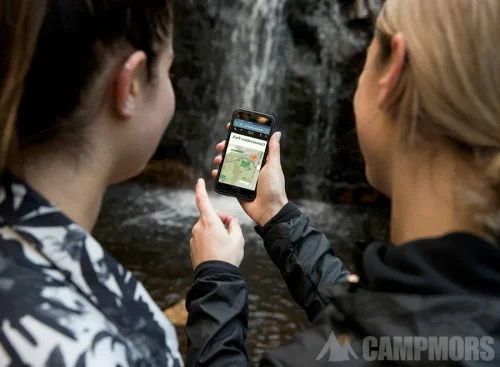
Top 10 Essential Considerations and Preparations Before Wild Camping
Free yourself from the hustle and bustle of the city. To enjoy the time that
May 15, 2022
Campmors offers high quality tents for family small group camping. Suitable for a variety of applicable environments, such as: camping, beaches, forests and valleys, etc. Comfortable and durable, it can create a larger leisure space with the sky curtain. The tent’s high-density mesh provides a good anti-mosquito effect.
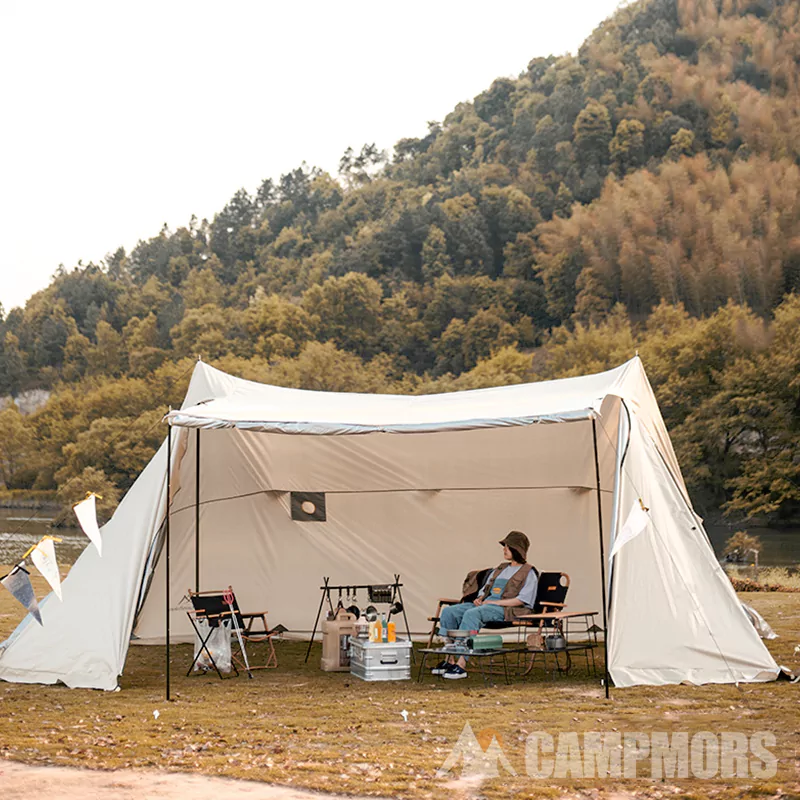
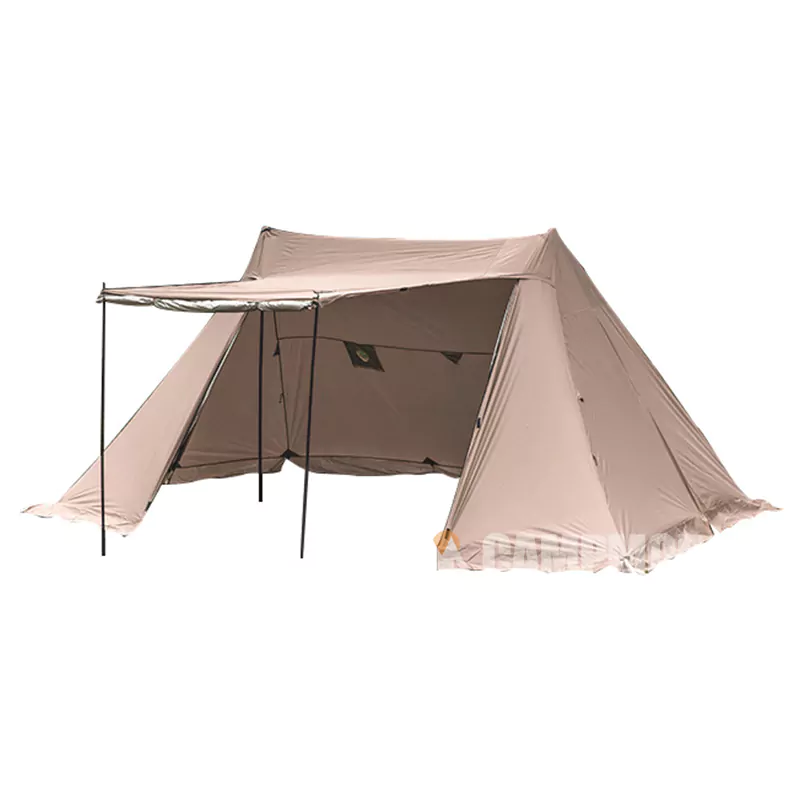
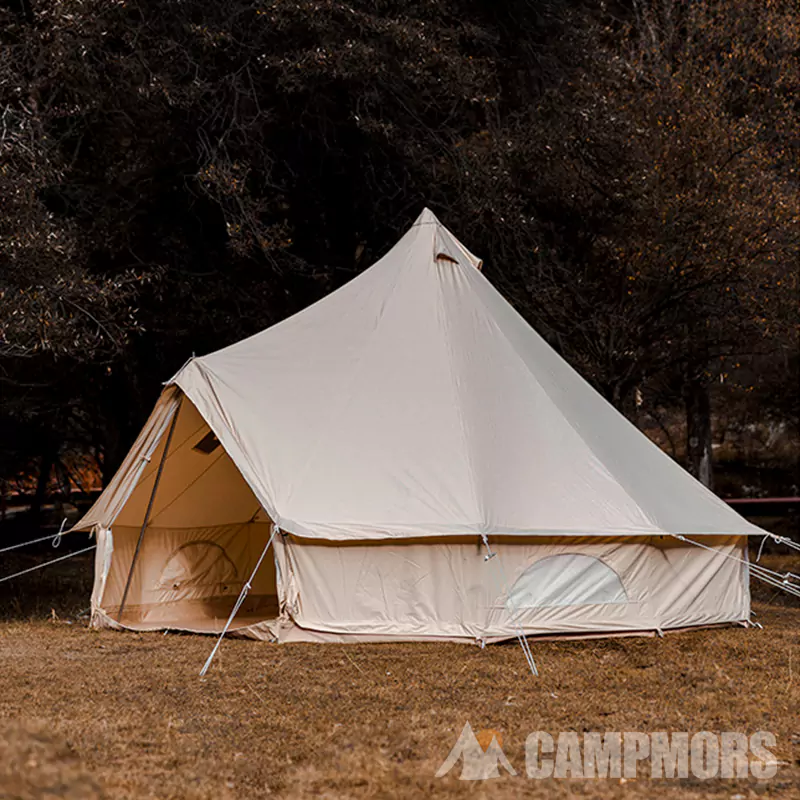
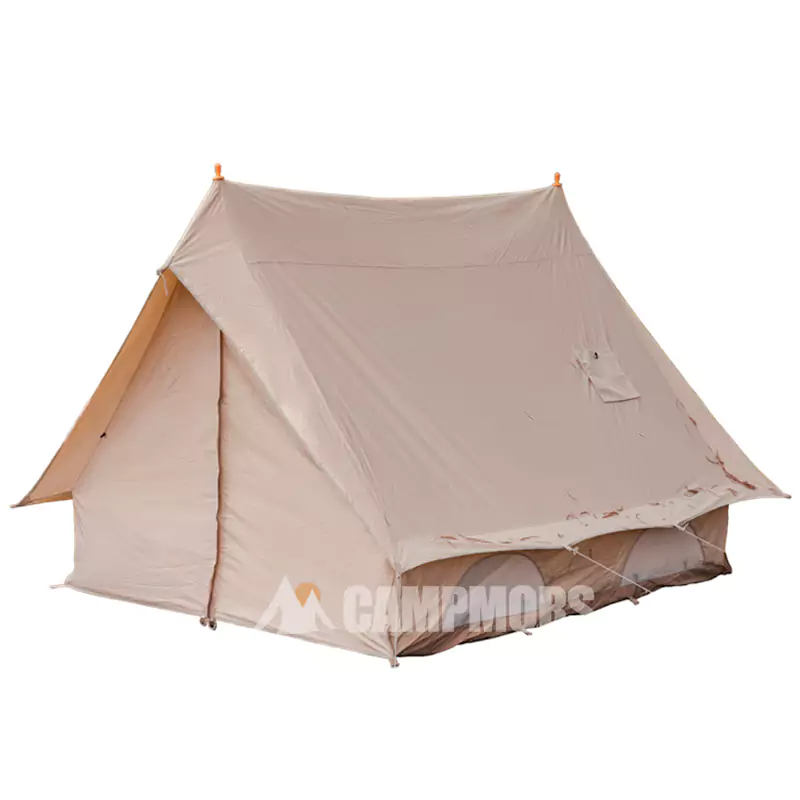
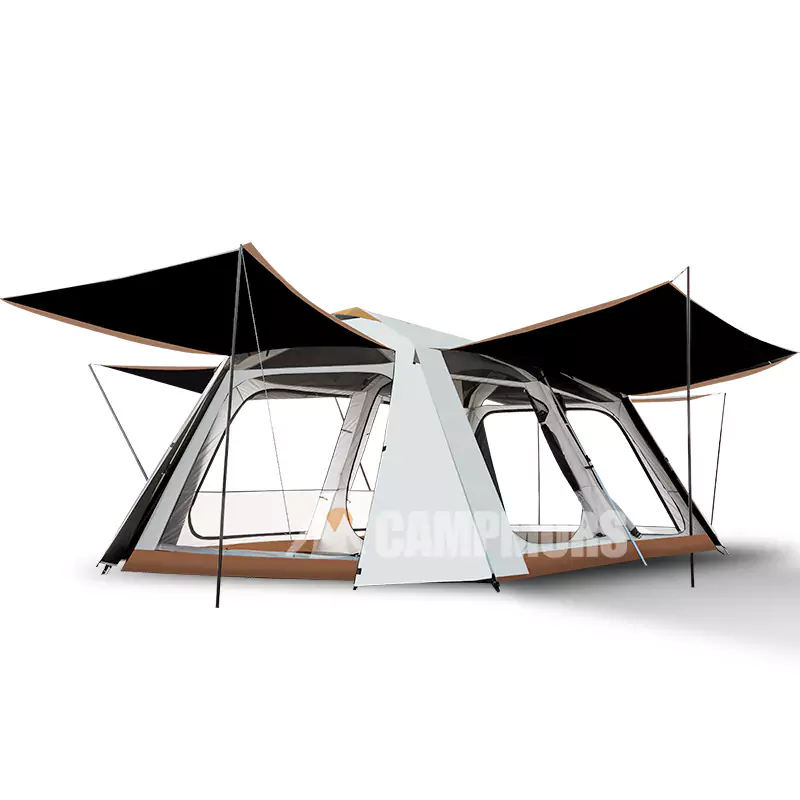
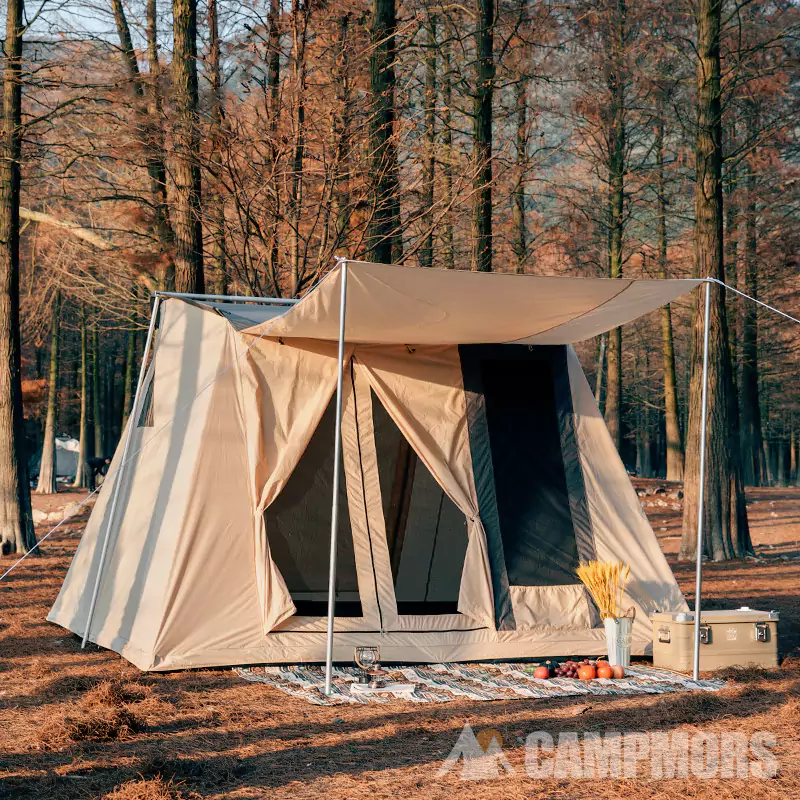
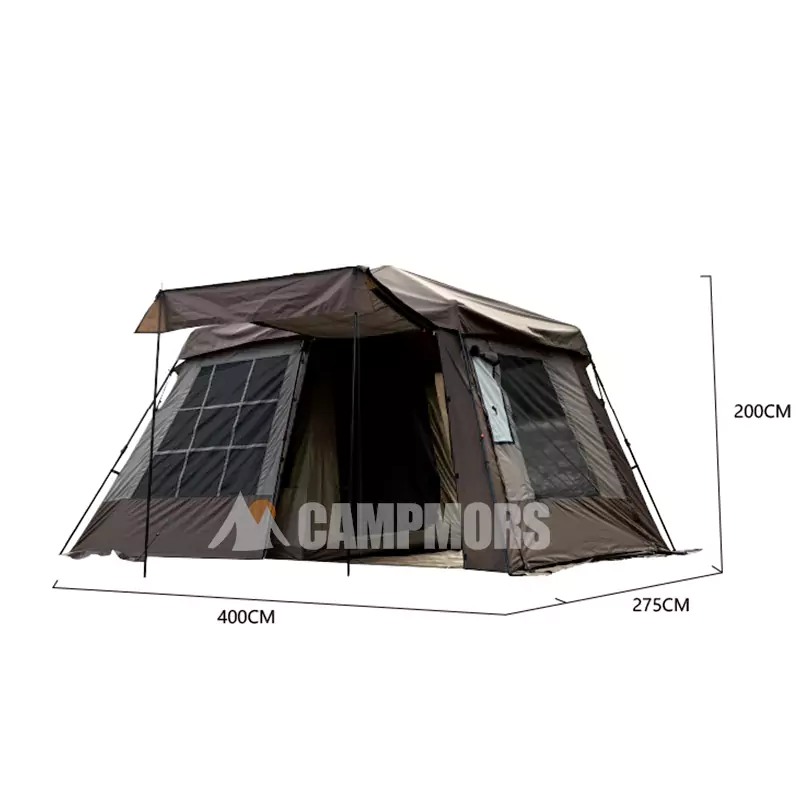
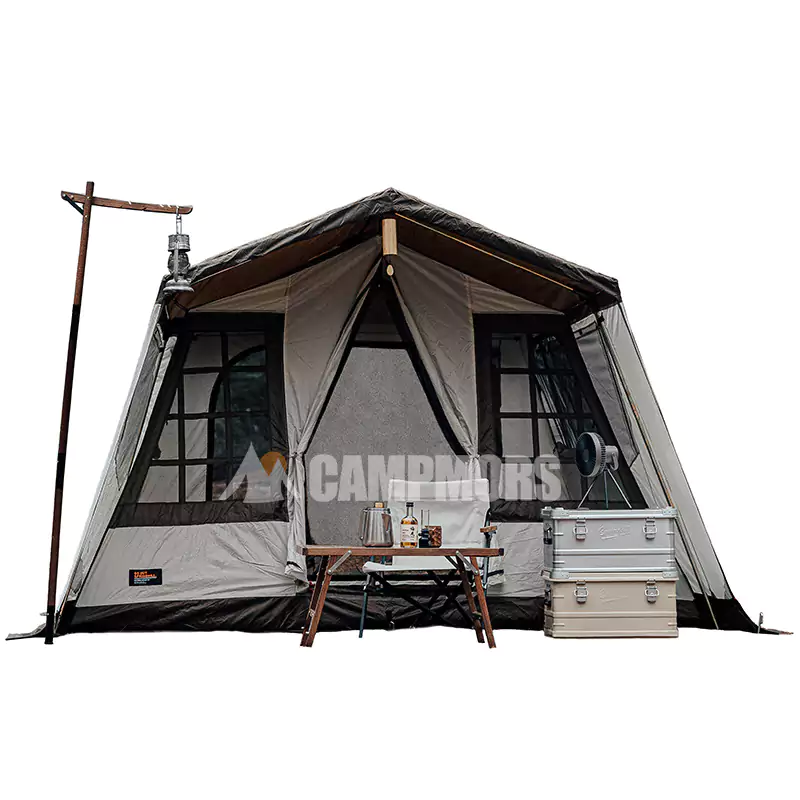
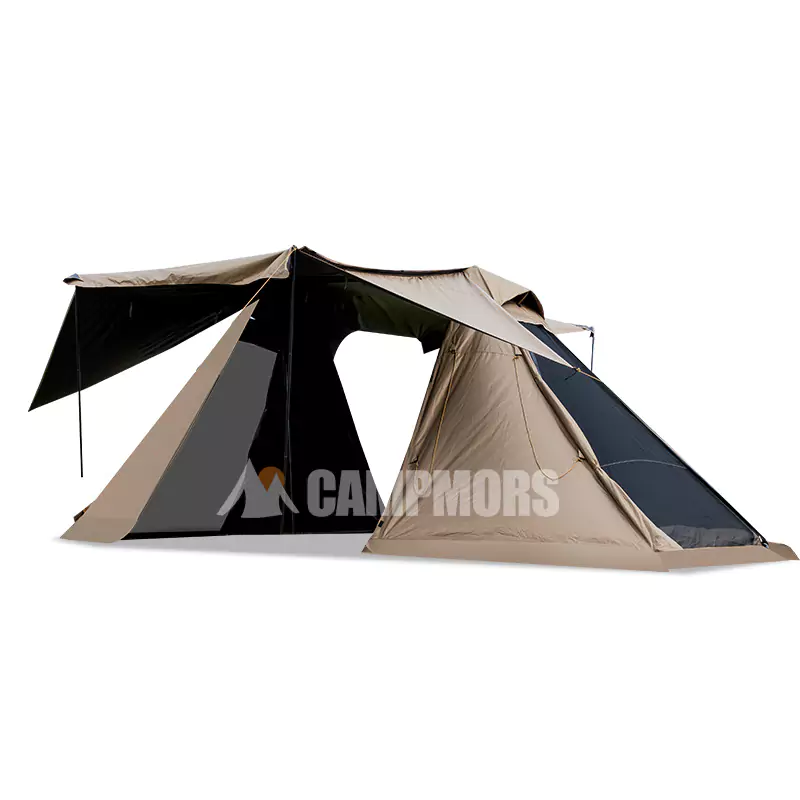
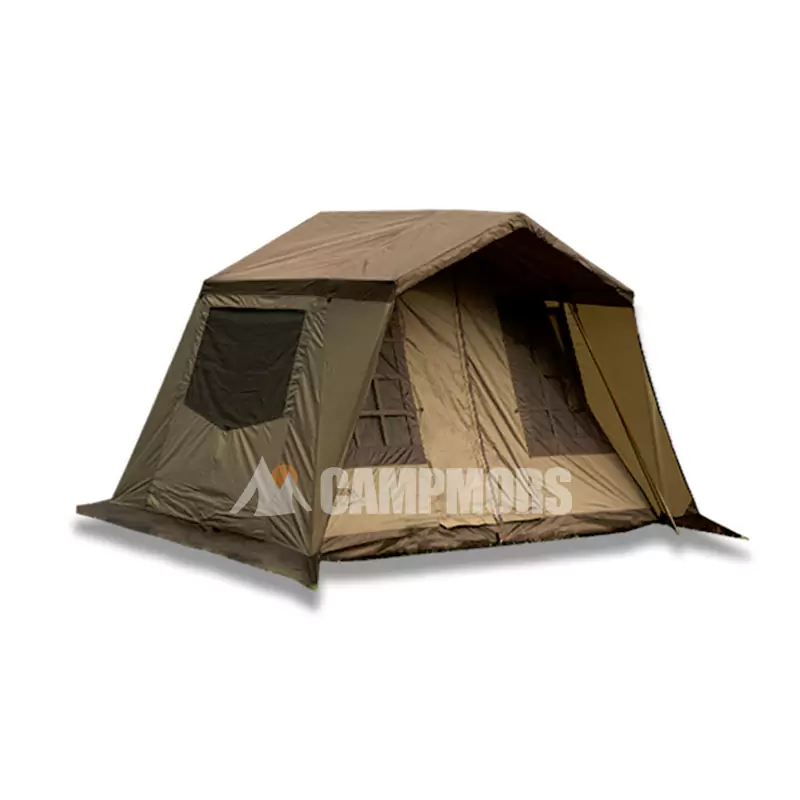
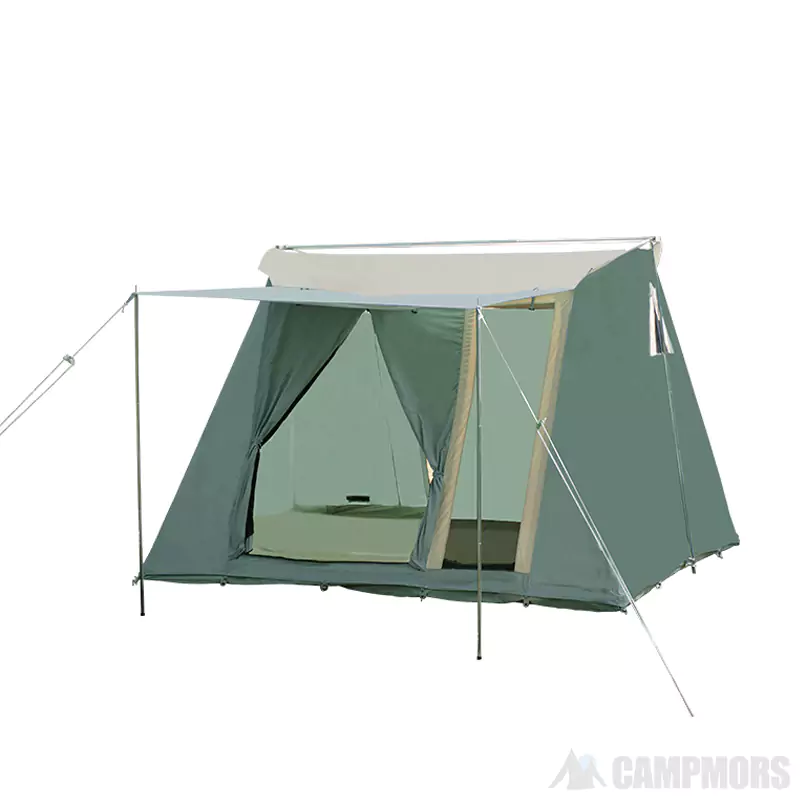
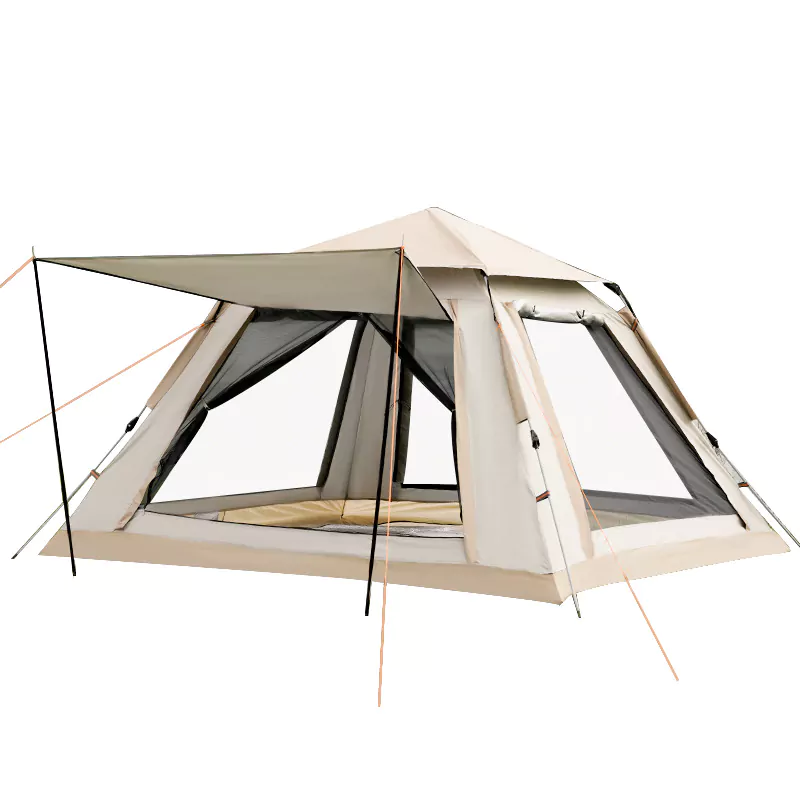
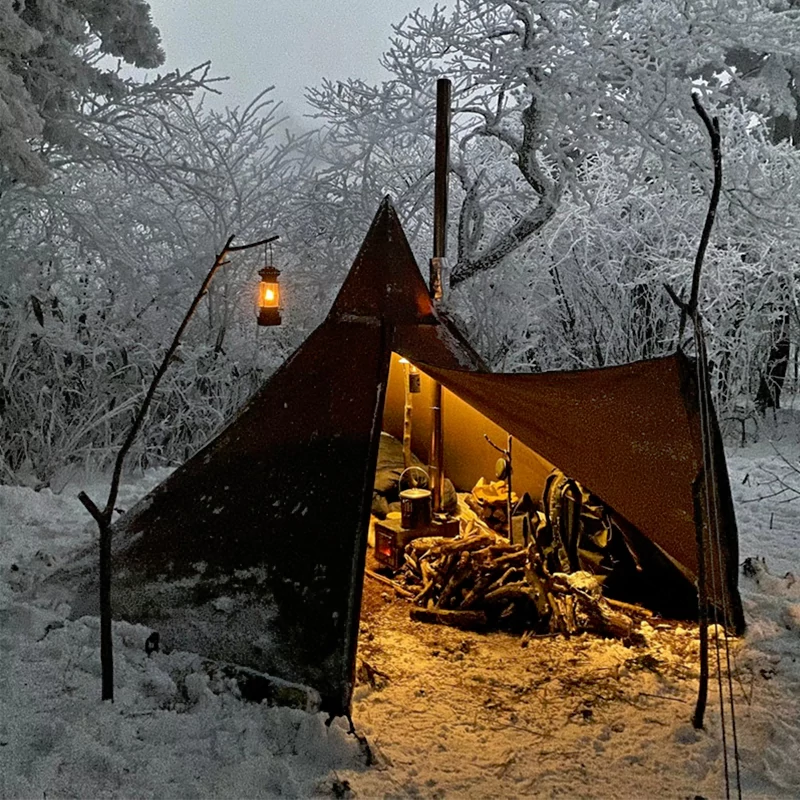
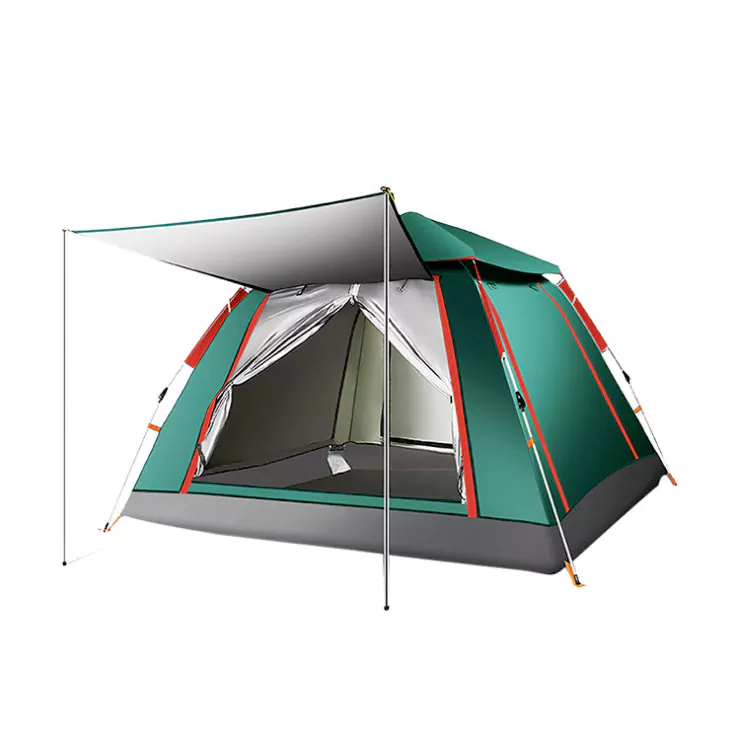
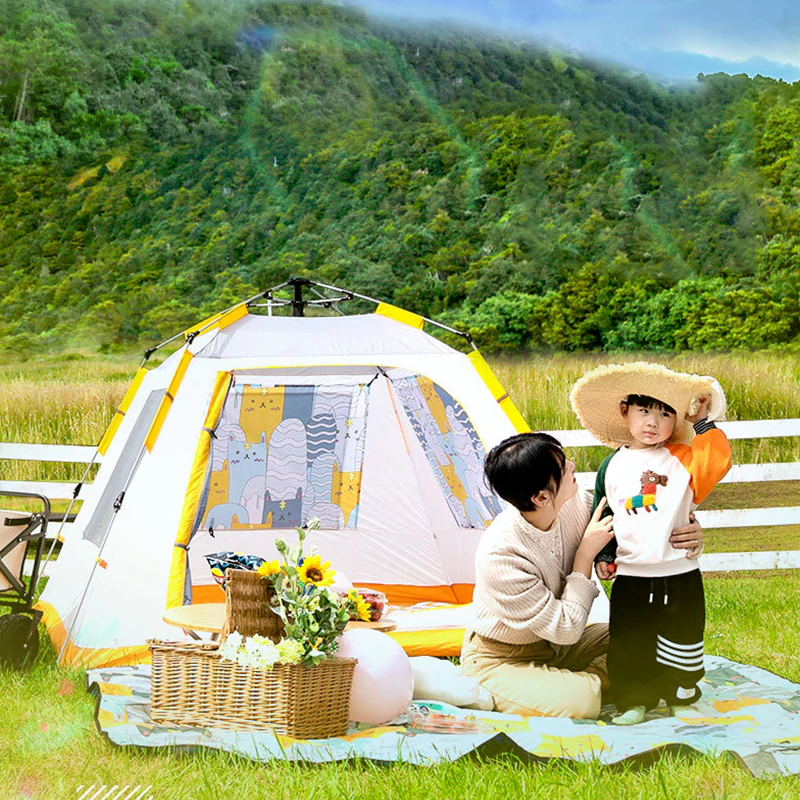
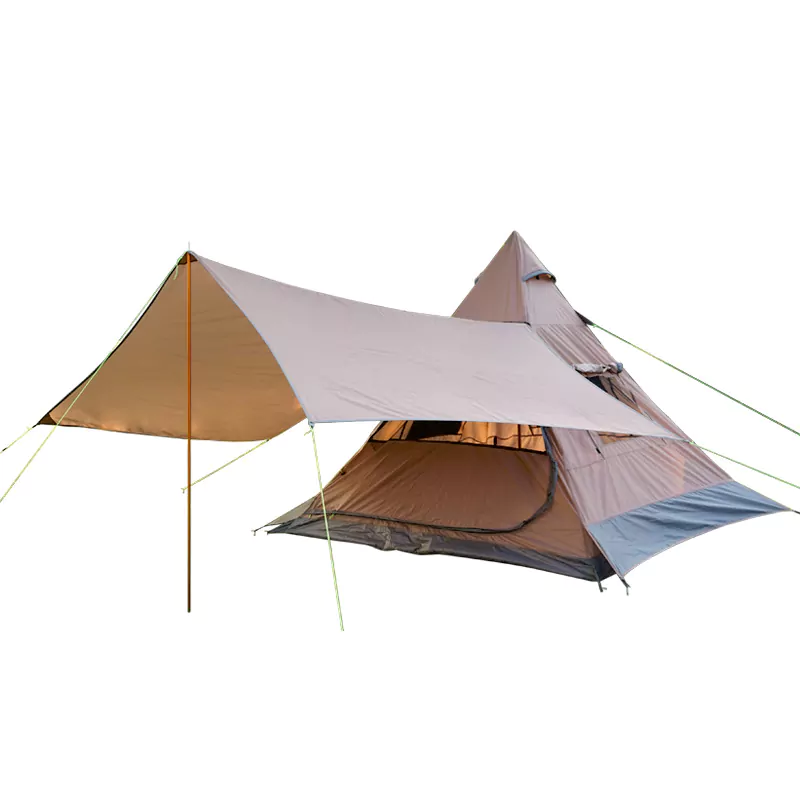
Best Camping Tents for Families and Small Groups.
Sometimes we bring our family or friends to go camping outdoors in a large group. Then a spacious, strong and user-friendly best family/group camping tent can provide everyone with a relatively comfortable camping experience. The spacious and abundant space can accommodate more people to rest together or place more camping equipment to meet the needs of activities. In heavy rain or snowy weather, tables and chairs can even be placed inside to play card games.
3-4 small family outdoor camping tents should have some basic conditions to provide a pleasant camping experience for the family. as follows:
Reasonable moisture-proof and breathable design;
Now with the improvement of design and technological production, there are many different types of best family camping tents, rich in shape design and size. From a few kg to 30kg or even heavier large inflatable tents, its rich selection can meet any needs of outdoor enthusiasts. Check out our tent types blog for a detailed breakdown of tents. Here are some examples of tent types that are commonly used for group and family outdoor camping activities. These tents are usually large and have the interior space needed to provide enough activity for large families or groups.
Dome tent: This is a very common tent design with two flexible poles crossed in the center to hold up the tent fabric. It is easy to carry, and the large-sized dome tent can accommodate groups of more than 6 people at the same time.
Spire Tent: Also known as A Tower Tent. Peak tents offer more stability, but are also bulkier and lack headroom. Usually suitable best tents for outdoor activities for a small families of 3-4.
Cabin Tent: Cabin tents are a bit like a normal house. The interior has a multi-room layout design, and the internal partition curtain can protect privacy to a certain extent. Multi room family tents space is usually relatively spacious, which can meet the needs of many people to rest.
Pop-up tents: Pop-up tents in everyone’s mind may not be suitable for team use. But with the advancement of pop-up devices, pop-up tents have been able to be applied in large sizes. Thanks to its outstanding easy-to-build features, if you don’t want to spend too much time setting up your tent. pop up family tents are your number one choice.
Tunnel tent: The multi-link design of the tunnel tent provides excellent stability. The interior space has also been utilized to a great extent. This is unmatched by the A tower tent. The almost uniform interior height is great for multiple people walking.
Family tent camping activities are not so difficult, on the contrary, if we bring family and friends to camp together, it can promote everyone’s feelings. Choose from a variety of styles and sizes of best family group camping tents, along with some other camping gear to make for a great weekend. If you are a newbie to family camping, I hope the following experience can help you.
Considerations when preparing best family tents for camping include:
When you have considered the above factors, you can choose the best family group camping tent that suits you according to the characteristics of the tent and your own needs. The selection of severe weather is as follows.
Going camping with the family doubles our experience. But there are times when we plan a long-term outdoor camping event and encounter strong winds, heavy rain, or heavy snow. But what should I do if I don’t want to give up this trip? Choosing a high-quality best family tent for wind and rain that can handle inclement weather will effectively help us spend our camping trips with family and friends.
Design style: Common design styles of family tents include dome tents, peak tents, tunnel tents, bell tents, wall tents, roof tents and cabin tents. Usually peak tents, bell tents, wall tents are more visually pleasing and can cope with severe weather such as strong winds and heavy rain.
Tent Fabrics: The fabrics used in the modern group/family tent manufacturing process are very diverse. Common ones are as follows: nylon, polyester, oxford and cotton canvas.
Nylon tent fabrics are generally characterized by their lightness and are not recommended as shelter from inclement weather. Polyester tents are thicker than nylon tents and can handle some heavy rain and light winds. However, it is still not recommended to use polyester tents to face extreme weather. If you are going to special environments such as high mountains and snowy mountains to deal with the weather such as strong wind, heavy rain and heavy snow, it is recommended to choose between Oxford cloth and canvas cotton.
Water resistance and abrasion resistance: Family camping often means larger camping groups. The more the number of people, the stronger the wear and tear of the tent. The same type of fabric will also have a waterproof and wear-resistant grade distinction. Thicker woven fabrics tend to be more durable and can withstand harsh weather conditions. You don’t have to worry about being affected by rain in heavy rain and windy weather. Choose fabric models with higher weave density based on team size and severe weather rating. For example, if the Oxford cloth is more than 300D, the larger the value, the higher the weaving density, and the stronger the waterproof and wear-resistant type of the cloth.
Size: The size of family tents is usually designed according to normal adult body size. For example, the 4-person family team tent you see is designed to fit four normal-sized adults lying down in parallel. Children also need to give them ample space just like adults. If your team also wants to set up a rest area and eating area, you will need to choose a large group tents or configure an additional awning/canopy rest area.
Weight: There are many factors that affect the weight of a home tent, such as: the structure and material of the pole, the fabric and size of the tent cloth. If you are hiking or climbing, you need to pay special attention to the weight. It will affect every step you take.
Number of rooms: We always have a place to rest for all participants in the camping team. Sometimes separate tents are chosen, but other times, “all-in-one” multi-room family tent are chosen based on the number of participants in the entire family camping group. This is a more economical way to get everyone together to sleep together. Distinctive room dividers provide privacy.
Accessories: When dealing with severe wind and rain, in addition to the tent itself needs to have a solid structure and thick fabrics. We can also cooperate with other accessories to enhance the firmness of the tent. Such as: rain rope, reinforcement nails, additional waterproof top cloth and other accessories. We can use it appropriately according to our needs, but we can’t live without it.
Functionality: Additional user-friendly design features can bring great convenience to our family. Such as: hidden vents can prevent external rainwater from entering while providing additional breathability; portable storage bags are convenient for storing small items such as mobile phones, books, etc., saving our sleeping space; Family tent with porch can provide a small rest when there is no canopy area; the inner layer of mesh can effectively prevent mosquito infestation…
We need to set up our camp when we are out in the wild with our family and ready to rest. And the tent is the most important and largest piece of equipment on a family group camping trip. There are many different styles of family tents on the market, and the way they are set up and dismantled can be a little different. Don’t be afraid, once you know the basics of building a family tent. Setting up this large family camping tents is not difficult.
The important steps are as follows:
Choose a good surface: Choose an ideal surface for campsites based on our travel itinerary map. Flatness, cleanliness, safety and comfort are important determinants. For detailed knowledge of ground selection, please refer to our related articles.
Lay down a tarp: Lay down a tarp after clearing the ground of debris and sharp objects (it helps keep the tent floor dry during heavy rains). Make sure the tarp is larger than the footprint of the tent. The excess part can be folded up.
Unfolding the tent: Connect the support poles, tent poles and tent cloth of the big group tent. And slowly raise the main pole of the tent to raise the family tent. Different structural types of family tents have different deployment methods. For detailed deployment methods, please operate according to the detailed introduction of the tent.
Fixed position: After the family camping tent is unfolded, first look around to see if the position meets the ideal requirements. Confirm that the fixing work can be carried out without making the position adjustment. Fixed in a “diagonal” way. Pull to the sides to minimize folds in the fabric of the home tent, then fix the tent base diagonally in turn.
Add accessories: After the family tent structure is built, you can add some accessories according to the actual situation of the environment. Make your family tent camp more secure and comfortable. More ground studs and rain ropes can be used to reinforce the tent to avoid strong winds; a canopy can be added to enhance water resistance; tables and chairs can be placed to provide a resting place; hanging string lights and bunting make the team camp more warm and bright; place carpets to improve comfort; in winter Use stoves and heaters to ward off the cold and more.
Properly Storing Family Tent:
Everyone wants their family camping tent to last as many years as possible and to look good. So the correct cleaning and storage methods are very important. CAMP recommends that your tent be thoroughly cleaned after each trip and inspected for holes, tears, etc. Please dry the tent completely before storing the tent fabric to avoid the growth of bacteria and mildew. The tent poles also need to be naturally dried before storage to avoid rusting and affect the quality of the next use. Specific cleaning steps can be learned from our polyester tents and oxford tent pages.
Based on the above, we can see that there are many factors that determine the time required to set up a team family tent.
The size, shape and pole structure of family tents.
Family Pop-up quick-opening tents can be set up quickly; small family tents can also be set up in about ten minutes; while large group tents can take 1-2 hours to set up properly and secure. Of course, if there are a lot of people working together, even a best tents for large groups with connecting rods built by hand will be built quickly.
The early work is for everyone to better enjoy the campfire time at night. Hope you all have a great camping trip.
Newbies and seasoned campers alike are always unsure of what we should pack when packing for a family/team camping trip. Campmors has put together this family/group camping checklist for you. Help you pack all the items you need to avoid omissions that affect everyone’s camping experience.
Tent system:
tents, tarps, floor mats, ground nails, rain ropes, canopies;
Sleep system:
Sleeping bags, sleeping pads, camping pillows, windproof blankets;
Leisure system:
Hammocks, folding tables, folding chairs;
Cooking System:
Lighters, portable camp stoves, baking trays, water purifiers, kettles, coolers, camping sinks, kitchen knives, cutting boards, pots and pans, cleaning supplies;
Lighting system:
Light strips, tent lanterns, headlights, flashlights, astigmatism;
Electronic system:
Audio, solar charging stations,
Additional gadgets:
Backpack, first aid kit, compass, camping survival knife and axe, insecticide, personal hygiene kit, bear spray;
You also need to prepare some additional camp clothing in combination with the local temperature difference between morning and evening. The hot sun needs to be cool, and the cold winter night needs to be warm.
If you have kids in your party, consider getting them some additional items such as sunscreen, snacks, fishing rods, board games, and other kid-friendly entertainment toys. They might ask to go home if they are unhappy, but we don’t really want to end the journey so soon.
Bringing your dog or cat? Make sure to add their supplies to your family camping list. Such as: food, dog bowls, dog beds and blankets. After all, they also need food and rest.
The above list is just a list of common group family camping gear. You can choose the best choice according to your own backpack situation, or make additional supplements. If you have any other camping gear that you think is perfect for family camping, let us know and we’ll hear from you.

Free yourself from the hustle and bustle of the city. To enjoy the time that
